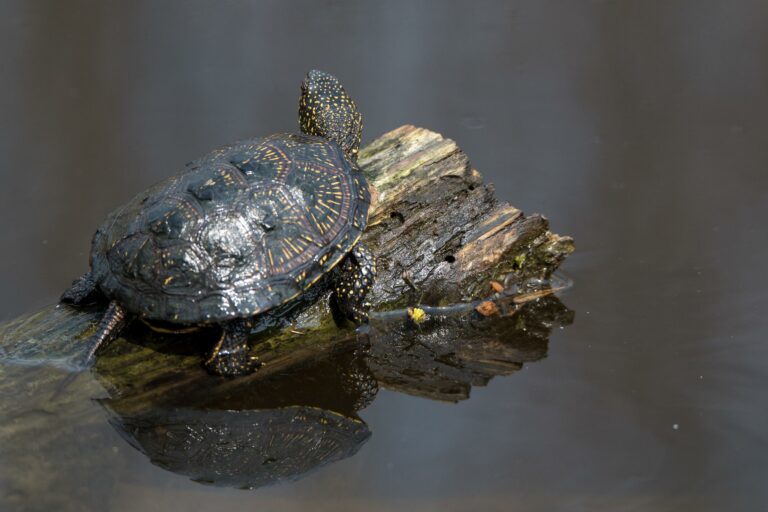Emys orbicularis

The arched, oval to rounded carapace of the European pond turtle can reach a length of up to 23 cm. It is dark brown to blackish in color and adorned with dots, spots, or lines. The plastron is also darkly colored.
Females of Emys orbicularis are usually larger than males.
This species is the only native turtle species occurring naturally in Central Europe and prefers shallow, stagnant, sunny waters that have suitable nesting sites. During the cold season, the European pond turtle hibernates in the bottom mud of bodies of water. Reproduction takes place between April and May, with the hatchlings emerging in late summer and autumn. The main threats to this species include predation by predators such as raccoons, raccoon dogs, otters, red foxes, badgers, and wild boars, as well as various bird species that feed on turtle eggs. The introduced red-eared slider turtle Trachemys scripta elegans also contributes to the displacement of the European pond turtle (Glandt 2018).
Diet: Emys orbicularis has a mixed diet, including both animal and plant matter. Their food items include worms, insects and their larvae, frog spawn, crayfish, snails, frogs, carrion, and various species of aquatic plants (Glandt 2018).
Threat status: According to the IUCN Red List for endangered species, the European pond turtle is classified as “potentially vulnerable” globally, and in Germany, it is already considered “critically endangered.” This species is protected under Annex IV of the FFH Directive.
-
Glandt D (2018)Praxisleitfaden Amphibien- und Reptilienschutz. Schnell – präzise – hilfreich. Berlin, Heidelberg: Springer Berlin Heidelberg.